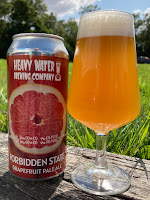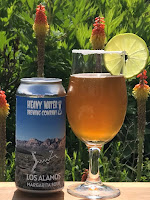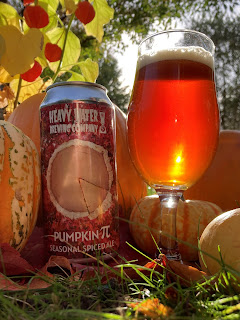Back Catalogue
Here are details of all our beers to date:
Cloud Chamber - New England IPA
A cloudy, New England IPA full of juicy tropical flavours of pineapple, mango, grapefruit and passion fruit from Azacca and Cashmere hops and a special East Coast yeast.
ABV: 6%, IBU: 20, Hops: Azacca, Cashmere.
A cloud chamber is a sealed vacuum vessel containing super-saturated alcohol vapour (generally not beer!) used as a particle detector to visualise the passage of ionizing radiation. Energetic particles knock electrons off gas molecules, creating a trail of ions, around which condensation droplets form as a visible cloud track.
Dark Material - Chocolate Empirical Stout
A powerful, warming imperial stout packed full of rich, indulgent chocolate flavours. A beer to savour on a chilly night.
ABV: 8%, IBU: 70, Hops: Fuggles.
Dark Matter is thought to account for some 85% of the matter in the universe. It is extremely difficult to detect, because it does not appear to interact with with ordinary (baryonic) matter or electromagnetic radiation (eg light), except through gravity, so its existence is inferred from astrophysical observations, and it may be composed of some as-yet undiscovered subatomic particles.
The lamp on the label is on the corner of Brasenose Lane in Oxford - it recently featured in Series 2 of BBC's His Dark Materials by Oxford's Philip Pullman.
Dragonfly 44 - Dark Stout
A smooth, easy-drinking, dark stout with chocolate and coffee flavours, a gentle smoky finish and a creamy, oaty body. This may be the dark matter that astronomers have been seeking.
ABV: 4.8%, IBU: 45.
Dragonfly 44 is an ultra-diffuse galaxy, in the Coma Cluster (pictured, courtesy: NASA/JPL-Caltech/L.Jenkins (GSFC)), which was thought to be composed of 99.99% Dark Matter, having a mass approximately the same as the Milky Way, but emitting only 1% of the light. Its coordinates in Right Ascension and Declination are shown on the label. It is the subject of some controversy, as recent research has cast doubt on the original observations of its mass, and therefore proportion of Dark Matter.
Element 79 - Golden Ale
Crisp, refreshing Golden Ale with a malty body and a smooth hop flavour from traditional East Kent Goldings. An artisan take on a classic British ale.
ABV: 3.9%, IBU: 40, Hops: East Kent Goldings.
The 79th element in the periodic table is Gold, an atom of which has 79 protons. The formula represents Gold's electron configuration.
A delicious, tart, dry Belgian-style Saison with spicy, peppery flavours and a gentle perfumed fruitiness from the addition of fresh and dried figs. Thirst-quenching refreshment!
ABV: 5.2%, IBU: 10, Hops: Saaz.
The Higgs boson is an elementary particle in the Standard Model of particle physics, which gives particles mass, and was proposed in 1964 by physicist Peter Higgs. The Higgs boson was first experimentally observed in 2012 by the ATLAS and CMS detectors in the LHC at CERN. The label shows a nineteenth century botanical drawing of a fig (fig.1!), with particle traces from the ATLAS event confirming the Higgs boson, showing a decay into 4 muons. The formula gives the current best estimate of the mass of the Higgs boson.
Forbidden State - Grapefruit Pale Ale
Refreshing pale ale with a subtle, sweet pink grapefruit flavour, from both the hops and fruit zest. Easy-drinking, sessionable and delicious.
ABV: 4.2%, IBU: 30, Hops: Simcoe.
The grapefruit is an accidental hybrid between a sweet orange and a pomelo discovered in Barbados. First documented in 1750, it was called the "forbidden fruit" for many decades. In quantum mechanics, the Pauli Exclusion Principle forbids any fermion (e.g. an electron) from having the same quantum state as any other in a system, so those states are forbidden. This is why matter is solid, and beer stays in your glass until you drink it.
Los Alamos - Margarita Sour
All the flavours of a margarita cocktail (lime, orange and tequila) in a tart, sour beer, brewed with fresh citrus fruit and dark agave nectar. Drink ice-cold from a salt-rimmed glass.
ABV: 5.5%, IBU: 4, Hops: Fuggles.
Los Alamos National Laboratory was initially organized during World War II for the design of nuclear weapons as part of the Manhattan Project. It is located near Santa Fe, New Mexico, where margaritas are very popular. In 1956, Fred Reines, Clyde Cowan Jr and a Los Alamos team were the first in the world to experimentally detect the neutrino elementary particle. The Feynman diagram on the label shows beta+ decay, in which a proton transmutes into a neutron by the emission of a positron and an electron neutrino.
Moleculator - Dunkel Bock
This dark, Bock-style lager beer is crisp and refreshing, with a more satisfying, malty flavour than paler lagers. Bock used to be known as "liquid bread".
ABV: 4.8%, IBU: 20, Hops: Saaz, Admiral.
German bock beers are traditionally given names ending -ator (originating with Paulaner's "Salvator"), more than 200 are trademarked. A moleculator is a molecule capable of performing combinatorial and sequential operations such as arithmetic operations based on one or more physical or chemical inputs. The molecule shown on the label, based on Boron Dipyrromethene (BODIPY) dye can perform subtraction operations, by emitting different colours of light. Moleculators may eventually form the basis of organic computers.
Oxford Marmalade - Bitter Orange IPA
A lightly fruited IPA with heady orange aromas and flavours from Citra and Amarillo hops, and a long, bitter and subtle finish of marmalade from the addition of bitter orange zest.
ABV: 5.5%, IBU: 50, Hops: Citra, Amarillo.
The equations are a transcription of those written on a blackboard by Albert Einstein during a lecture in Oxford on 16 May 1931, and now preserved in Oxford's Museum of the History of Science. They are taken from a key paper on relativistic cosmology by Einstein concerning the possibility of a universe of time-varying radius.
Pumpkin π - Seasonal Spiced Ale
A spiced amber ale flavoured with roast pumpkin, ginger, nutmeg, cinnamon and vanilla. Lovely by a roaring fire on a cold autumn or winter night.
ABV: 4.5%, IBU: 18, Hops: Challenger.
Pi is an irrational, transcendental, mathematical constant which is defined as the ratio of a circle's (or a pie's) circumference to its diameter. It plays a critically important role in mathematics and almost all areas of physics.
Schrödinger - Weissbier
Refreshing wheat beer in the style of a German weissbier, reminiscent of Erdinger, bringing flavours of clove and banana, for a lovely Summer thirst-quencher. Best served cold.
ABV: 4.8%, IBU: 9, Hops: Saaz.
Erwin Schrödinger won the Nobel Prize in Physics in 1933 for postulating (in 1925) his linear partial differential equation describing the wave function of a quantum mechanical system. The time-dependent equation is shown for a single non-relativistic particle, and a solution is pictured illustrating the wave packet duality of a particle. He also liked cats.
Standing Wave - West Coast IPA
A crisp, refreshing West Coast IPA dry-hopped for an explosion of citrus and pine flavours. Best enjoyed ice-cold on a Californian beach.
ABV: 5%, IBU: 40, Hops: Citra, Cascade, Amarillo.
A standing wave is one which does not progress, but whose amplitude changes in time, for example harmonic vibrations on a string, which are represented in the picture and the equation appearing on the label. Of course, you can also use a surfboard to stand on a wave...















Comments
Post a Comment